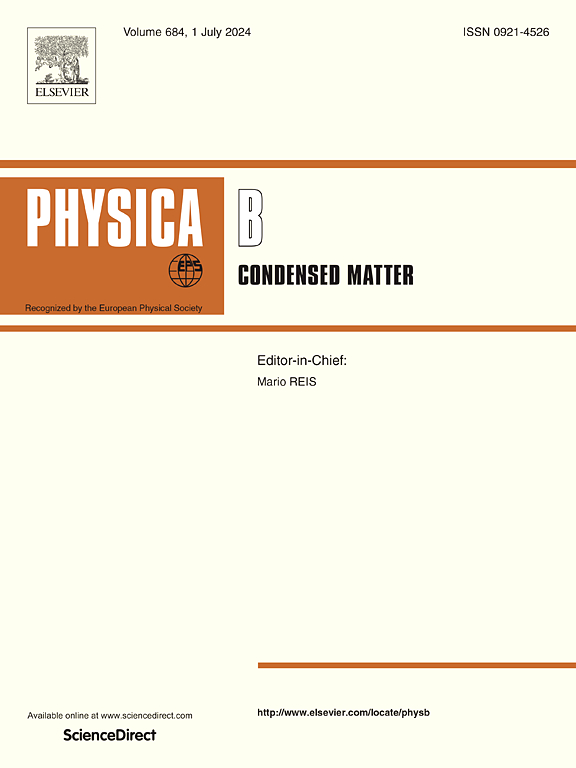Prediction of low-modulus Ti-based refractory high-entropy alloys for orthopedic implants using machine learning and DFT calculations
IF 2.8
3区 物理与天体物理
Q2 PHYSICS, CONDENSED MATTER
引用次数: 0
Abstract
Designing metallic biomaterials with elastic properties comparable to human bone is a key challenge in orthopedic implant development. This study presents an integrated machine learning (ML) and density functional theory (DFT) framework to accelerate the discovery of biocompatible refractory high-entropy alloys (RHEAs). A dataset comprising eight key descriptors was used to train six ML models, with CatBoost achieving the highest accuracy (R2 = 0.99 training, 0.97 testing; RMSE = 0.1 GPa). SHAP analysis identified atomic radius, electronegativity, and valence electron concentration as dominant factors influencing elasticity. The framework was applied to TiZrNbX (X = Ta, Hf, V, Mo, W, Re, Cr) alloys. ML-predicted young's moduli (74.5–172.4 GPa) closely matched DFT results (57.8–156.1 GPa). TiZrNbHf, with its low modulus and favorable ductility, emerged as a promising implant candidate. This work demonstrates the effectiveness of ML-DFT integration for rapid, interpretable, and targeted design of next-generation orthopedic materials.
利用机器学习和DFT计算预测骨科植入物用低模量ti基难熔高熵合金
设计具有与人类骨骼相当的弹性性能的金属生物材料是骨科植入物发展的关键挑战。本研究提出了一个集成的机器学习(ML)和密度泛函理论(DFT)框架,以加速生物相容性难熔高熵合金(RHEAs)的发现。使用包含8个关键描述符的数据集来训练6个ML模型,CatBoost达到了最高的准确率(训练R2 = 0.99,测试R2 = 0.97;RMSE = 0.1 GPa)。SHAP分析发现原子半径、电负性和价电子浓度是影响弹性的主要因素。该框架应用于TiZrNbX (X = Ta, Hf, V, Mo, W, Re, Cr)合金。ml预测的young’s模量(74.5 ~ 172.4 GPa)与DFT结果(57.8 ~ 156.1 GPa)非常吻合。TiZrNbHf具有低模量和良好的延展性,是一种很有前途的植入物候选材料。这项工作证明了ML-DFT集成对于快速、可解释和有针对性地设计下一代骨科材料的有效性。
本文章由计算机程序翻译,如有差异,请以英文原文为准。
求助全文
约1分钟内获得全文
求助全文
来源期刊

Physica B-condensed Matter
物理-物理:凝聚态物理
CiteScore
4.90
自引率
7.10%
发文量
703
审稿时长
44 days
期刊介绍:
Physica B: Condensed Matter comprises all condensed matter and material physics that involve theoretical, computational and experimental work.
Papers should contain further developments and a proper discussion on the physics of experimental or theoretical results in one of the following areas:
-Magnetism
-Materials physics
-Nanostructures and nanomaterials
-Optics and optical materials
-Quantum materials
-Semiconductors
-Strongly correlated systems
-Superconductivity
-Surfaces and interfaces
 求助内容:
求助内容: 应助结果提醒方式:
应助结果提醒方式:


